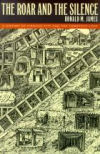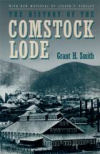
HOME
INTRO
SYMBOLS
ALMANAC
ECONOMY
GEOGRAPHY
STATE MAPS
PEOPLE
FORUM
NEWS
COOL SCHOOLS
STATE QUIZ
STATE LINKS
BOOK STORE
MARKETPLACE
NETSTATE.STORE
NETSTATE.MALL
GUESTBOOK
CONTACT US


Dbl click any word in
document for definition.
Nevada State Colors

Nevada State Colors: Silver and Blue
Before and since its entry into the Union in 1864, the colors silver and blue have been associated with Nevada.
The mineral, silver, has played a major role in the state's economy since the discovery of the famous Comstock Lode in 1858. When Nevada gained statehood in 1864, silver was the primary metal being mined. In 1999, Nevada produced 30% of the nation's silver. In the early 1980s, Nevada license plates began to display one of the state's most prominent nicknames, "The Silver State." According to the U.S. Geological Survey, in 2006, Nevada ranked second, behind only Alaska, in the production of silver. 1
Silver is the color of the star on the state flag. Mining plays a prominent role in the design of the state seal.
Nevada's official state metal is silver.
Blue reflects the cobalt blue of Nevada's flag and the official state bird, the mountain bluebird.
Assembly Bill No. 666 was brought to the Legislature, and read for the first time on May 13, 1983, by Assemblyman Bruce Bogaert. The bill was referred to the Assembly Committee on Government Affairs.
On May 16, 1983, Assemblyman Bogaert offered testimony in the Committee. His testimony is logged in the Minutes of the Nevada State Legislature.
You will notice all of the things that are official in the State of Nevada. It wasn't too long ago that the bird wasn't official. Finally the bird was made official. For some reason or another we still do not have the colors silver and blue as the official State colors of Nevada even though we know those are the official State colors. You might also notice that on the State map, they list various things and again I find they don't have the colors. I would like you to take the view of a tourist. You have entered the State of Nevada and you have picked up a map or gone through a Visitor's Center and you find out that after 118 years the State of Nevada cannot decide that silver and blue are their official colors.
("Minutes of the Nevada State Legislature" 1)
Though we can't know at this date what Mr. Bogaert was thinking, his words express an utter disbelief that the matter of state colors had been neglected for so long.
Perhaps all of the Nevada legislators shared Mr. Bogaert's sentiments. There doesn't appear to have been any dissent concerning this bill. It was approved in the Assembly and the Senate in a week's time and signed into law six days later.
Silver and blue became the official state colors when Governor Richard Bryan signed Assembly Bill No. 666 on May 25, 1983.
Assembly Bill No. 666 - Assemblyman Bogaert
CHAPTER 499
AN ACT relating to state symbols; designating the state colors as silver and blue; and providing other matters properly relating thereto.
(Approved May 25, 1983)
THE PEOPLE OF THE STATE OF NEVADA, REPRESENTATED IN SENATE AND ASSEMBLY, DO ENACT AS FOLLOWS:
Section 1. Chapter 235 of NRS is hereby amended by adding thereto a new section which shall read as follows:
The colors silver and blue are hereby designated as the official state colors of the State of Nevada.
Nevada Law
The following information was excerpted from the NEVADA REVISED STATUTES, Title 19, Chapter 235, Section 235.025.
TITLE 19—MISCELLANEOUS MATTERS RELATED TO GOVERNMENT AND PUBLIC AFFAIRS
CHAPTER 235 - STATE EMBLEMS; GIFTS AND ENDOWMENTS
MISCELLANEOUS STATE EMBLEMS
NRS 235.025
NRS 235.025 State colors. The colors silver and blue are hereby designated as the official state colors of the State of Nevada.
(Added to NRS by 1983, 1347)
Sources...
[1] The United States. U.S. Geological Survey. Mineral Commodity Summaries, January 2007. Washington, U.S. Government Printing Office: U.S. Geological Survey, 2007. Print.
Bogaert, Bruce. The State of Nevada. Nevada Legislative Counsel Bureau. Assembly Bill No. 666. Carson City: The State of Nevada, 1983. Print.
The State of Nevada. Nevada Legislative Counsel Bureau. Minutes of the Nevada State Legislature. Carson City: The State of Nevada, 1983. Print.
Shearer, Benjamin F. and Barbara S. State Names, Seals, Flags and Symbols: A Historical Guide Third Edition, Revised and Expanded. Westport, Conn: Greenwood Press, 3 Sub edition, 2001.
Additional Information
Nevada Facts and State Emblems: The State of Nevada.
NRS 235.025 State colors.: The Nevada Revised Statutes.

The Roar
And The Silence
Ronald M. James
The Roar And The Silence: A History Of Virginia City And The Comstock Lode, by Ronald M James. 384 pages. Publisher: University of Nevada Press (September 1, 1998) Nevada’s Comstock Mining District has been the focus of legend since it first burst into international prominence in the late 1850s, and its principal settlement, Virginia City, endures in the popular mind as the West’s quintessential mining camp. But the authentic history of the Comstock is far more complex and interesting than its colorful image. Contrary to legend, Virginia City spent only its first few years as a ramshackle mining camp. The mining boom quickly turned it into a thriving urban center, at its peak one of the largest cities west of the Mississippi, replete with most of the amenities of any large city of its time. The independent placer miner was also quickly supplanted by methods and organization that made the Comstock a major industrial center employing, and often inventing, the most advanced mining technology of its time.
The lure of the area’s fabulous wealth attracted a remarkably heterogenous population from around the world and offered employment to dozens of trades and thousands of people, both men and women, representing every one of the region’s diverse ethnic groups.

The History Of
the Comstock Lode
Grant H. Smith
The History Of The Comstock Lode, by Grant H. Smith. 344 pages. Publisher: University of Nevada Press (July 21, 1998) No aspect of Nevada's history has captured so much attention as the heady boomtown days of the Comstock Lode strike in the mid-nineteenth century. The History of the Comstock Lode, first published in 1943, provided mining investors, engineers, and western historians with the first comprehensive, chronological history of mining operations on the Comstock from 1850 to 1997. Grant H. Smith labored on this project for over a decade to produce a volume that has become a classic in its field and a mainstay in all mining history collections. Of particular note is Smith's progressive record of the ways the mines were developed, the failures encountered, the bonanzas discovered, and the production of the mines. New edition co-published with the Nevada Bureau of Mines and Geology.

